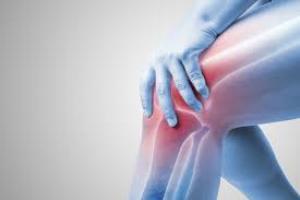Joint pain-causes,symptoms & managment

A wide range of conditions can lead to painful joints-Osteoarthritis, a “wear and tear†disease, is the most common type of arthritis.
Rheumatoid arthritis is an autoimmune disorder that happens when your body attacks its own tissues.
Bursitis is when sacs of fluid that help cushion your joints get inflamed.
Gout is a form of arthritis that most often affects your big toe joint.
ï‚·Strains, sprains, and other injuries.
Often, the pain can come with swelling and inflammation, stiffness, and loss of range of motion.
It may go away after a few weeks (acute), or last for several weeks or months (chronic). Even short-term pain and swelling in the joints can affect your quality of life. Whatever the cause of joint pain, you can usually manage it with medication, physical therapy, or alternative treatments.
 first try to diagnose and treat the condition that is causing your joint pain.
Â
The goal is to reduce pain and inflammation and preserve joint function. Treatment options include-
ï¬ mild pain without any swelling- acetaminophen can be effective.
Be careful when taking this medicine though, especially if you drink alcohol, because high doses may cause liver damage. Because of the risks, you should take any of these pain medications with caution.
ï¬pain is so severe -NSAIDs aren't effective enough.
prescribe a stronger opioid medication. Because opioid drugs can cause drowsiness, you should only use them under a doctor's care. They also can cause constipation, which you can relieve by taking laxatives.
ï¬Other drugs that may help relieve pain include-
Muscle relaxants to treat muscle spasms (may be used together with NSAIDs to increase the effect)
Steroids, Platelet-rich plasma therapy, Prolotherapy
Other injection options-
ï‚·Removing fluid from the joint
Injections of hyaluronan, a synthetic version of the natural joint fluid. This is used to treat osteoarthritis.